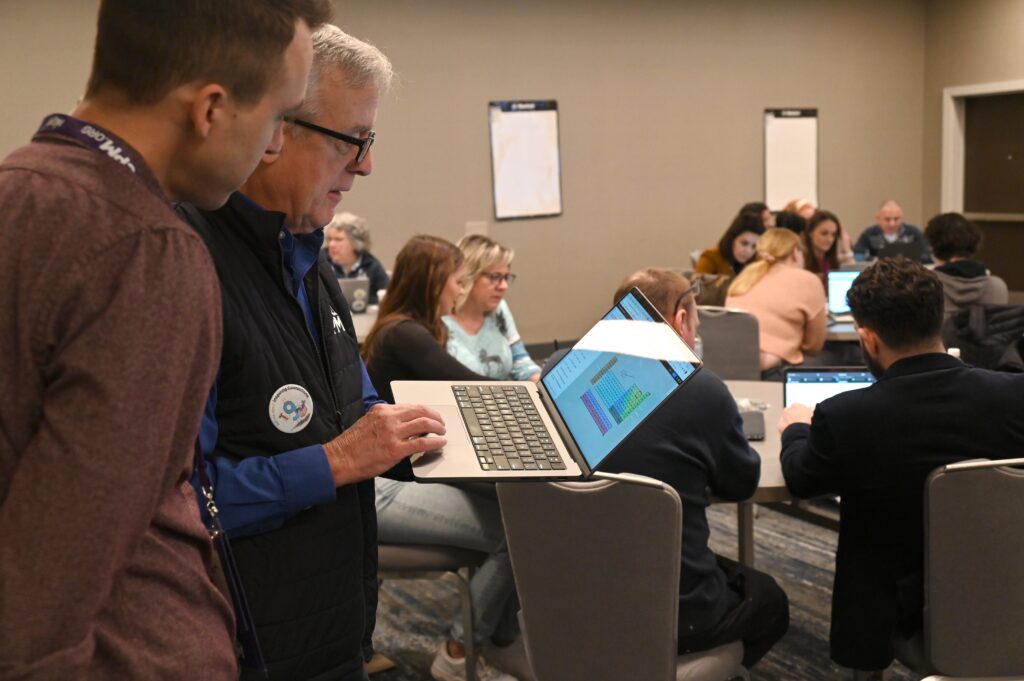December 2023

In the mid-1980s, there were rumblings from some teachers about the use of calculators in the math classroom. “Students need to know their basic facts!” “Students don’t notice if an answer is absurd if it is on the calculator; they just believe it.” “Students are just mindlessly pushing buttons; they are not thinking!” For several years, I heard of some teachers encouraging the use of calculators while others were trying to ban them.
While there are still a few hold-outs who do not allow their students to use calculators, many recognize that banning them is a losing battle. Most teachers understand that by using the calculator to do the menial math work, students could spend more time and mental energy on understanding the concepts. It was not necessary to spend several lessons teaching students how to calculate a square root by hand (yes, there is an algorithm for that), for example. The time could be spent working on real-world problems in which square roots arise naturally. This meant, however, that what should be taught in math classes and how would need to change.
The rumblings I am beginning to hear about artificial intelligence, like ChatGPT, sound reminiscent of those long-ago laments about calculators. This time, it is not just the math teachers who are raising an alarm: language arts teachers are joining the chorus.
However, outside the field of education, some doctors believe AI can save lives. A long-term trial of 80,000 women in Sweden showed that when AI read mammograms, it detected 20% more cases of breast cancer than the standard practice of two radiologists reading the images, checking each other’s diagnosis. Promising results. But, some medical personnel are uneasy about turning the reins over to AI. Do we really want a machine making life-or-death decisions? What if the AI made an incorrect diagnosis – who would be responsible? Can an AI really take the place of a caring nurse? Does using AI mean we do not need as many medical personnel?
While concern may be growing, responses from leaders in education and other industries are not keeping up. The issues are nuanced. Whether or not to use AI is not black and white and many of us are not comfortable sitting in shades of gray. Only two states, California and Oregon, have provided schools with guidance on using AI. So, what are teachers to do if they do not live in California or Oregon (or maybe, even if they do) and they need guidance on the use of AI?
It might help to accept that AI isn’t going away. All the cacophony about calculators did not keep them out of classrooms. Teachers adapted. The same will be true for AI.
We must understand that the use of AI will exist in shades of gray for a long time. It may never have easily defined guidelines in the classroom. Think of the medical example: an argument can be made for both sides of whether or not to use AI to read mammograms. Solutions lie somewhere in the middle.
We can reframe our thinking to see beyond AI as just another form of cheating. While AI can do more than a calculator, it still requires the user to pose the right question, make sense of the response, and determine whether that response is reasonable.
We can focus on the ethics of AI. When would it be acceptable to use it for schoolwork? Rarely will the answer to this be black and white. Students, teachers, and everyone should think in advance about whether and how it might be appropriate, rather than scrambling for excuses after the fact.
Just as what and how math is taught had to change when calculators became ubiquitous, it might be that teaching math will change again. So make friends with AI. Generative artificial intelligence can really do some amazing things. Take advantage of the help it can offer and enjoy it.
Ask yourself, How might you utilize AI for learning in your math class? Begin thinking and planning sooner rather than later. You might be able to make small tweaks in your practice as you learn more, and won’t be caught unaware and wondering what to do as the use of AI spreads. Remember that AI is great at doing things that can be automated, so AI support means you can focus on the things that math teachers do best: teaching critical reasoning, problem solving, creativity, and all the other fun things you wish you could spend more time on!
Karen Wootton
karenwootton@cpm.org